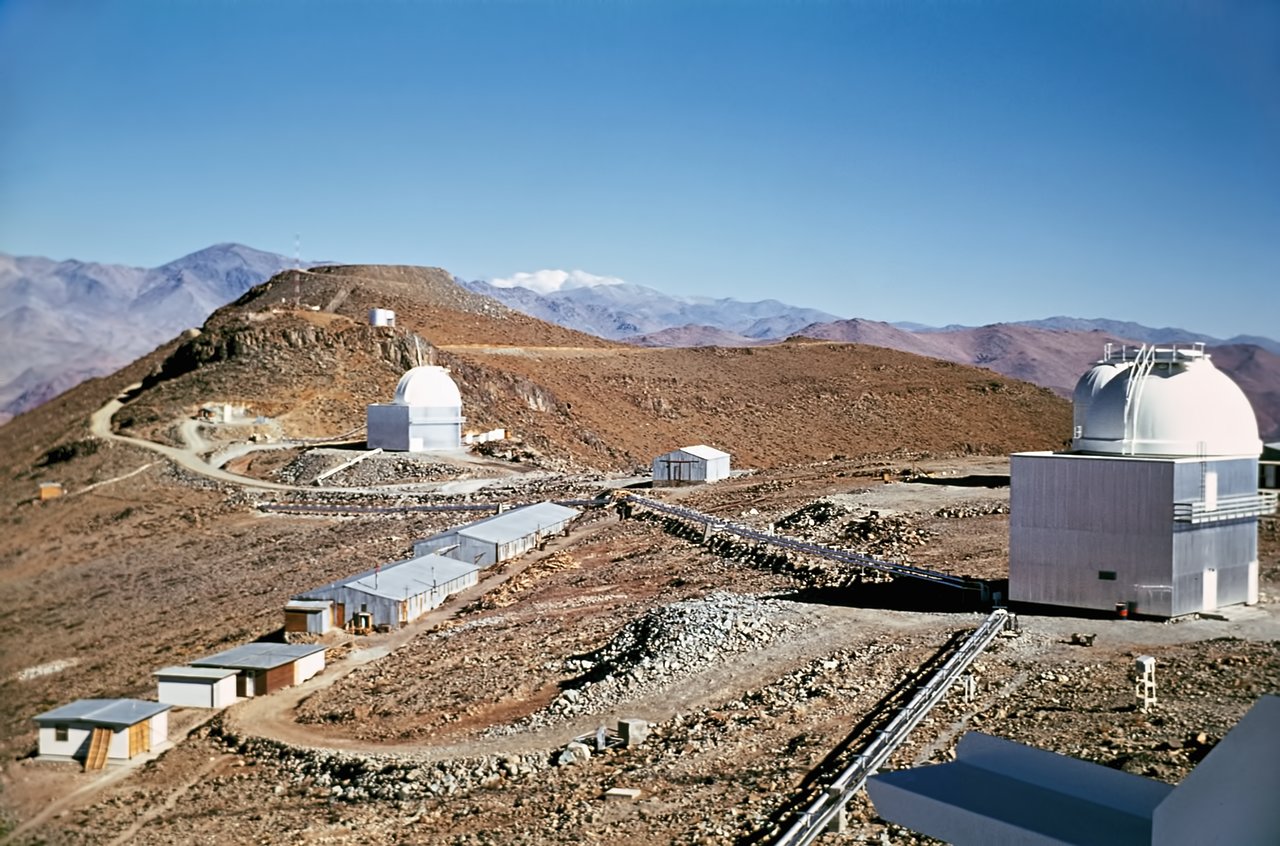A Glimpse into the Past — Then and Now at La Silla Observatory


ESO turns 50 this year, and to celebrate this important anniversary, we will be showing you glimpses into our history. Once a month throughout 2012, a special “then and now” comparison Picture of the Week will show how things have changed over the decades at the La Silla and Paranal observatory sites, the ESO offices in Santiago de Chile, and the Headquarters in Garching bei München, Germany.
Our first stop on this journey through time is at La Silla, the first of ESO’s observatory sites. The historical image was taken in the late 1960s or early 1970s from the dome of the ESO 1.52-metre telescope, which had its first light in 1968. A second photograph, taken in the present day, shows how much the observatory has changed over the decades. You can examine the changes with our mouseover image comparison.
In the historical image, we can see the ESO 1-metre telescope in the foreground on the right, with the Grand Prism Objectif telescope (GPO) just peeking out from behind. The third telescope in this photo is the Schmidt 1-metre telescope, on the left. Behind it, at a higher level, are the water tanks of the observatory.
Moving through time to the present-day, we can see how much La Silla has evolved, with many more telescopes on the site. The ESO 3.6-metre telescope and the adjacent Coudé Auxiliary Telescope now stand out on the highest peak. The angular enclosure of the New Technology Telescope (NTT) is just to the left, next to the water tanks. The 15-metre-diameter dish of the Swedish–ESO Submillimetre Telescope (SEST) watches the horizon on the far right.
The new photograph was taken from a slightly different position on top of the ESO 1.52-metre telescope building, so the GPO is now hidden behind the ESO 1-metre telescope in the foreground. The white dome that is just visible behind the 1-metre is the Danish 1.54-metre telescope. In the centre of the photo we now see the silvery dome of the MPG/ESO 2.2-metre telescope.
Although some telescopes at La Silla, such as the ESO 1-metre and 1.52-metre, and the SEST, are no longer in operation, others are still doing front-line astronomy. The ESO 3.6-metre telescope hosts the HARPS instrument, the world’s leading exoplanet hunter (see eso1134 for some recent results). The NTT has been used to help explain the formation of massive stars (see eso1029). Both telescopes provided vital data which led to the discovery of the accelerating expansion of the Universe — a discovery for which the 2011 Nobel Prize in Physics was awarded. The MPG/ESO 2.2-metre telescope has also produced a treasure trove of data from breathtaking wide-field images to studies of gamma-ray bursts, the most explosive events in the Universe.
Links
- The historical image
- The present-day image
- Side-by-side composite of the historical and present-day images
- More about La Silla
- Press release on the occasion of the 40th anniversary, in 2009, of La Silla’s inauguration
- ESO timeline
Credit
ESO/J. Dommaget
About the Image Comparison
| Id: | potw1201a |
| Release date: | 3 January 2012, 15:00 |

